Art & Exhibitions
Traveling This Summer? Don’t Skip These 11 Exhibitions on View Across the U.S.
Our staff picked out the shows around the U.S. that are on the summer bucket list.
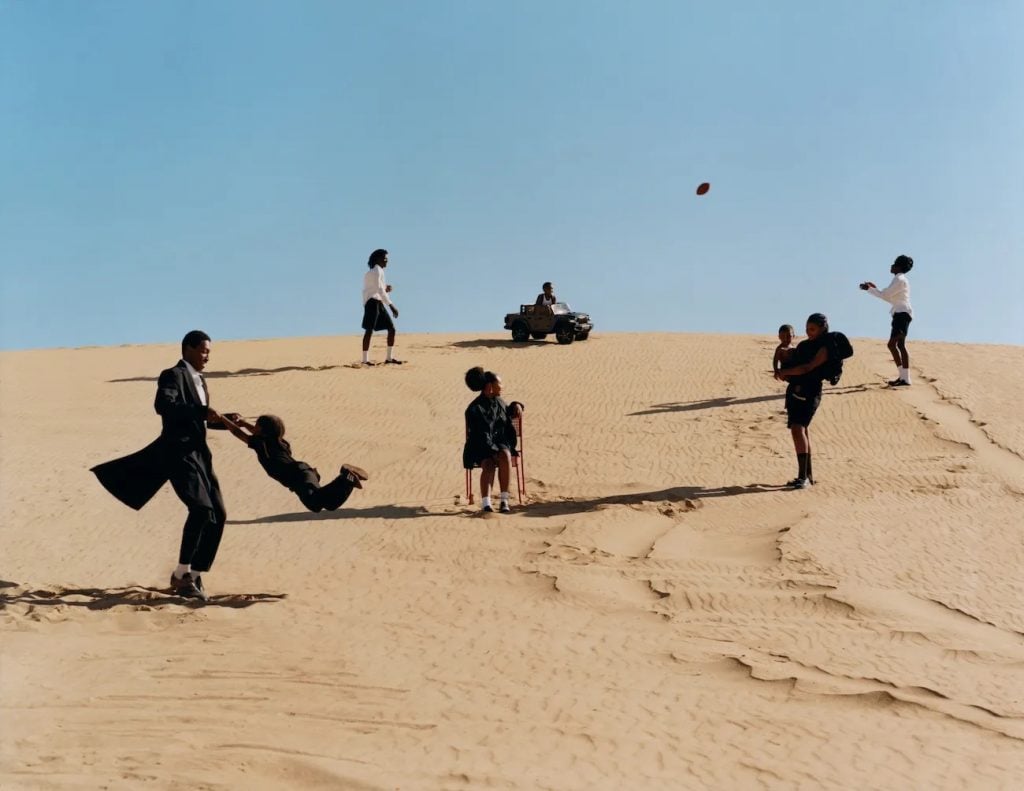
Our staff picked out the shows around the U.S. that are on the summer bucket list.

Artnet News

The exhibition calendar this summer is jam-packed with compelling shows. Our writers and editors picked out a few that are on their radar, now on view across the U.S.
“Dalí: Disruption and Devotion” at the MFA, Boston
Through December 1, 2024
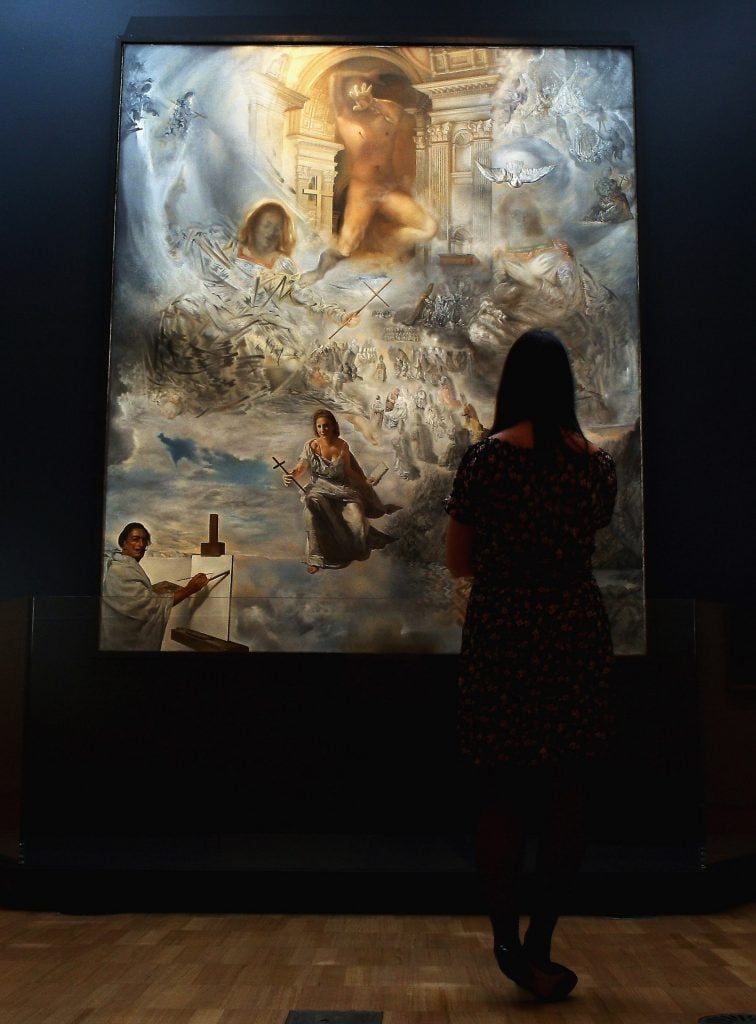
The Ecumenical Council (1960) by Salvador Dali on view in Australia. (Photo by Mark Dadswell/Getty Images)
Making the most of the 100th anniversary of Surrealism, the Boston MFA is taking a look at art history through Salvador Dalí’s melted lens. Works by the likes of El Greco and Velázquez from the museum’s permanent collection are pared with 30 loans from Florida’s Dalí Museum (sadly, the latter’s new A.I.-powered Dalí avatar does not make the trip to explain for itself the connections). Among other works, the show boasts Dalí’s feverish 9-by-8.3-foot, Las Meninas-inspired The Ecumenical Council (1960), which Catholic scholar Joseph Pierce says is “filled with the idealistic hope” of the Second Vatican Council, but critic Guy Burn once dubbed “a Victorian scrapbook of second-rate religious images.” Come and judge for yourself how it stacks up against the Old Masters!
—Ben Davis
“Seeing Red: Renoir to Warhol” at the Nassau County Museum of Art, Roslyn Harbor, New York
July 20, 2024, to January 5, 2025
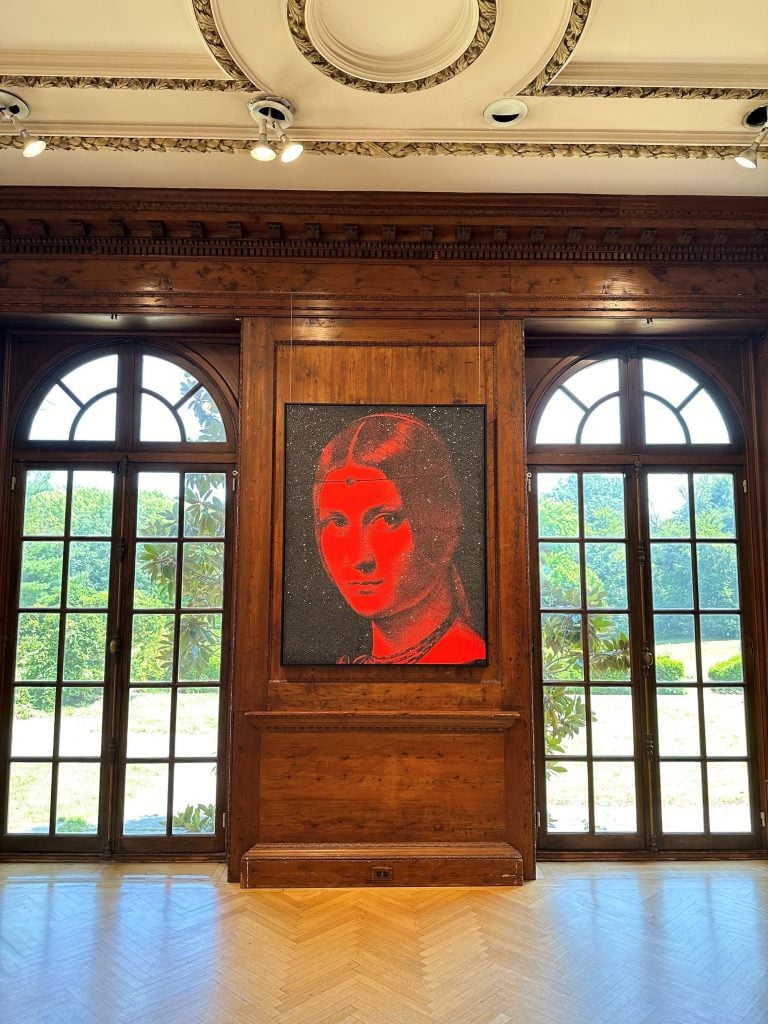
Installation view of “Seeing Red” at the Nassau County Museum of Art. Image courtesy the Nassau County Museum of Art.
This show featuring more than 100 works by 70 artists explores the many meanings and associations of the powerful color of red in art. As the title suggests, it features works by Pierre-Auguste Renoir and Warhol along with dozens of other blue chip stars such as Alexander Calder, Marc Chagall, Salvador Dali, Willem de Kooning, David Hockney, and Robert Indiana, as well as design icons such as Judith Lieber and Vivienne Westwood.
The exhibition catalogue quotes Josef Albers, whose work is also featured in the show: “If one says ‘Red’—the name of the color—and there are 50 people listening, it can be expected that there will be 50 reds in their minds. And one can be sure that all these reds will be very different.” A bonus for visitors is the stunning setting for the museum itself, a 145-acre property in Roslyn Harbor on Long Island’s so-called “Gold Coast” that was once home to the Frick Family.
—Eileen Kinsella
“Gordon Parks: Camera Portraits” at the National Gallery of Art, Washington, D.C.
Through January 12, 2025
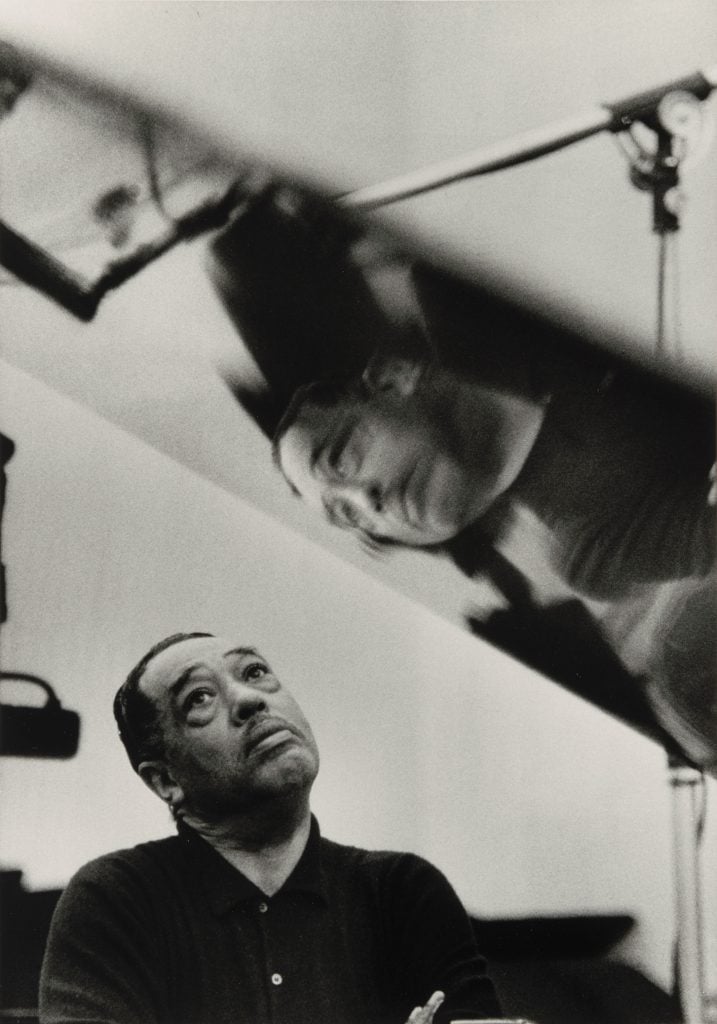
Gordon Parks, Duke Ellington Listening to Playback, Los Angeles, 1960. Courtesy of the National Gallery of Art and the Gordon Parks Foundation.
At the National Gallery of Art’s Corcoran Collection, the prolific career of photographer Gordon Parks is examined, while his subjects examine him right back: 25 stark portraits are framed in the gallery, with subjects including politician Ella Watson, jazz pianist Duke Ellington, and composer Leonard Bernstein.
Parks is celebrated as one of the most important photographers of Black life in America through the Civil Rights Movement, and the opportunity to look solely at his portrait photography shows how he was able to capture the emotional inner life of his subjects. Furthermore, the images curated into this exhibition show how Parks could push the boundaries of what a portrait is, with compositions ranging from straight-on, dead-center orientation to more abstract perspectives.
—Annie Armstrong
“Marisol: A Retrospective” at the Buffalo AKG Art Museum, Buffalo, New York
Through January 6, 2025
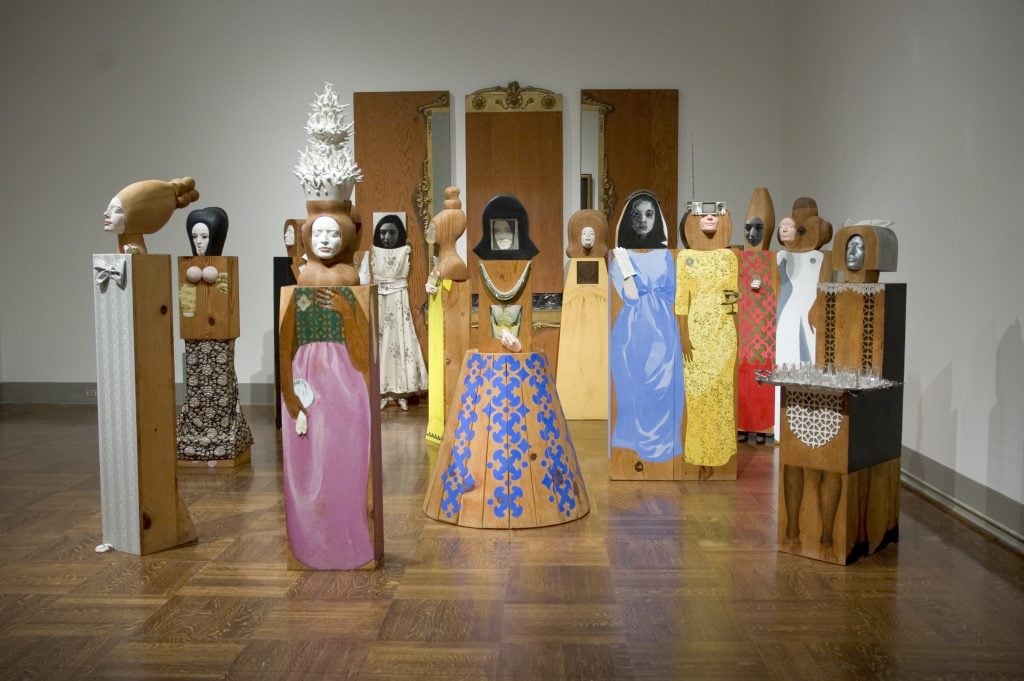
Marisol, The Party ( 1965-1966). Courtesy: Buffalo AKG Art Museum
With about 250 artworks on view, the exhibition is the most comprehensive show of Marisol’s work ever assembled, spanning the artist’s pioneering, multifaceted, nearly 60-year career. Born in France, Marisol (1930–2016) was one of the most prominent yet least well-known artists of her generation, starting in the 1950s.
She bequeathed her entire estate to Buffalo AGK Art Museum, whose chief curator Cathleen Chaffee organized the multi-venue survey, starting at the Montreal Museum of Fine Arts last year, with stops at the Toledo Museum of Art this year, and Dallas Museum of Art next year.
In Buffalo, 39 works from the collection are joining the tour for the first time. The retrospective will be installed across the 9,500-square-foot third floor of the new Jeffrey E. Gundlach Building. It includes many of the Pop sculptures that made Marisol a mid-century celebrity, including The Party (1965–66), with its 15 life-size wooden blocks representing women in New York society.
—Katya Kazakina
“Dana Claxton: Spark” at the Baltimore Museum of Art, Baltimore, Maryland
August 4, 2024, to January 5, 2025
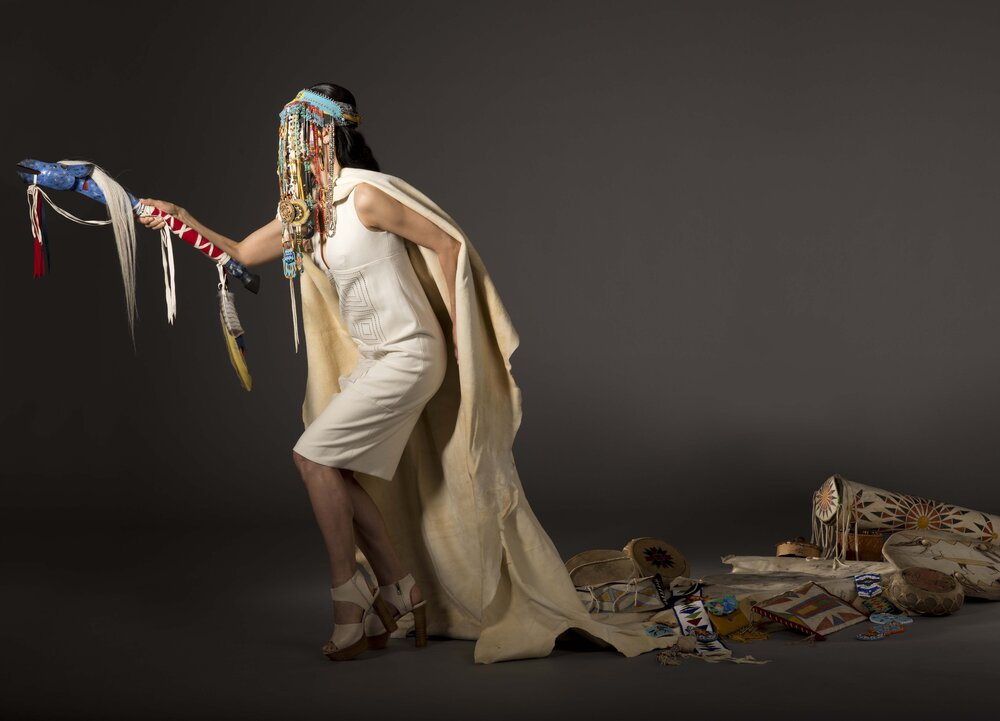
Dana Claxton, Cultural Belonging (2016). Courtesy of the Baltimore Museum of Art.
In her solo show “Spark,” Dana Claxton (Wood Mountain Lakota First Nations) presents her self-termed “fireboxes”—large-scale, backlit, color transparency photography—from both her “Lasso” and “Headdress” series in addition to a freshly commissioned “Headdress Portrait.” Across these bodies of work, the Native subjects are shown with regalia and other cultural object; adding another dimension to the exhibition is the inclusion of many of the objects shown in the “firebox” works from the museum’s own historic Native art collection.
Shown side-by-side, the historical thread from past to present and implied future is made manifest. The exhibition is part of the Baltimore Museum of Art’s comprehensive Preoccupied: Indigenizing the Museum initiative, which aims to rectify the erasure of Indigenous cultures by art institutions both within the museum and beyond.
—Annikka Olsen
“Crafting the Ballets Russes“: The Robert Owen Lehman Collection at the Morgan Library and Museum
Through September 22, 2024
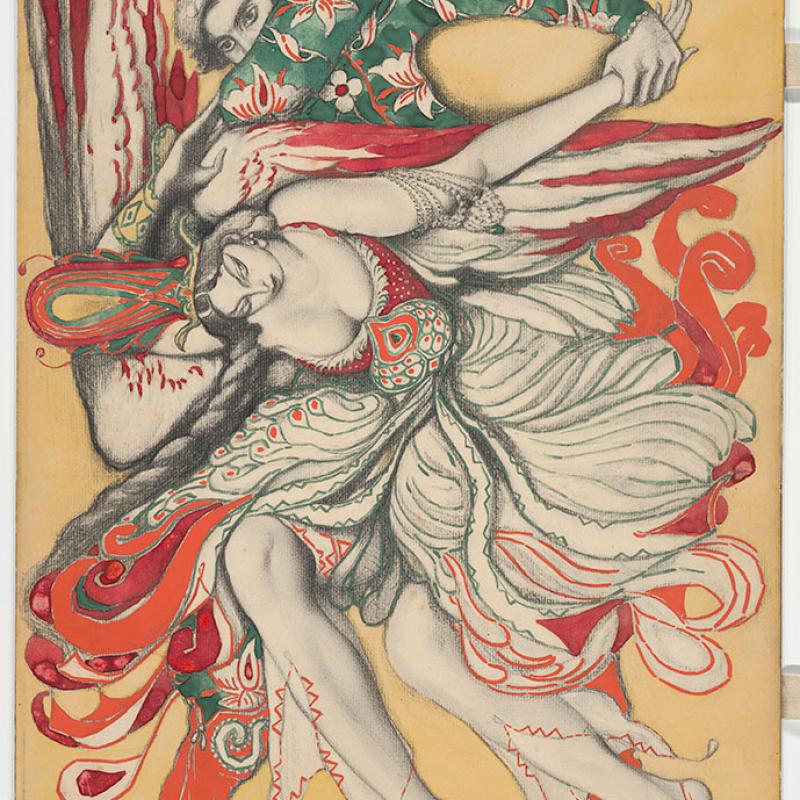
Léon Bakst, “Firebird and the Prince (Tsarevitch),” poster design for Firebird, 1915.
Courtesy of Harvard Theatre Collection, Houghton Library, Howard D. Rothschild Collection.
As part of its centennial, the Morgan Library and Museum is presenting an exhibit of Robert Owen Lehman’s revered collection of ballet music manuscripts. The collection, which has been held at the Morgan for half a century, is considered the world’s finest private trove of autograph manuscripts of Western music. The exhibit begins at the turn of the 20th century, with the debut of Serge Diaghilev’s Ballets Russes in Paris. The show goes on to trace the ascent of women in leading creative roles, including Bronislava Nijinska, the Ballets Russes’ only female choreographer whose seminal work shaped Les Noces and Bolero, and the dancer Ida Rubinstein, who went on to become a grand patron of French music.
Over 100 objects from the collection are showcased, including rare music and dance manuscripts, photographs, and costume designs by celebrated artists of the Belle Èpoque. The catalog reveals how the iconic ballet composers, choreographers, and designers collaborated to bring to life groundbreaking works of lasting impact.
—Adnan Qiblawi
“Frida: Beyond the Myth” at the Dallas Museum of Art, Dallas, Texas
August 18 to November 17, 2024
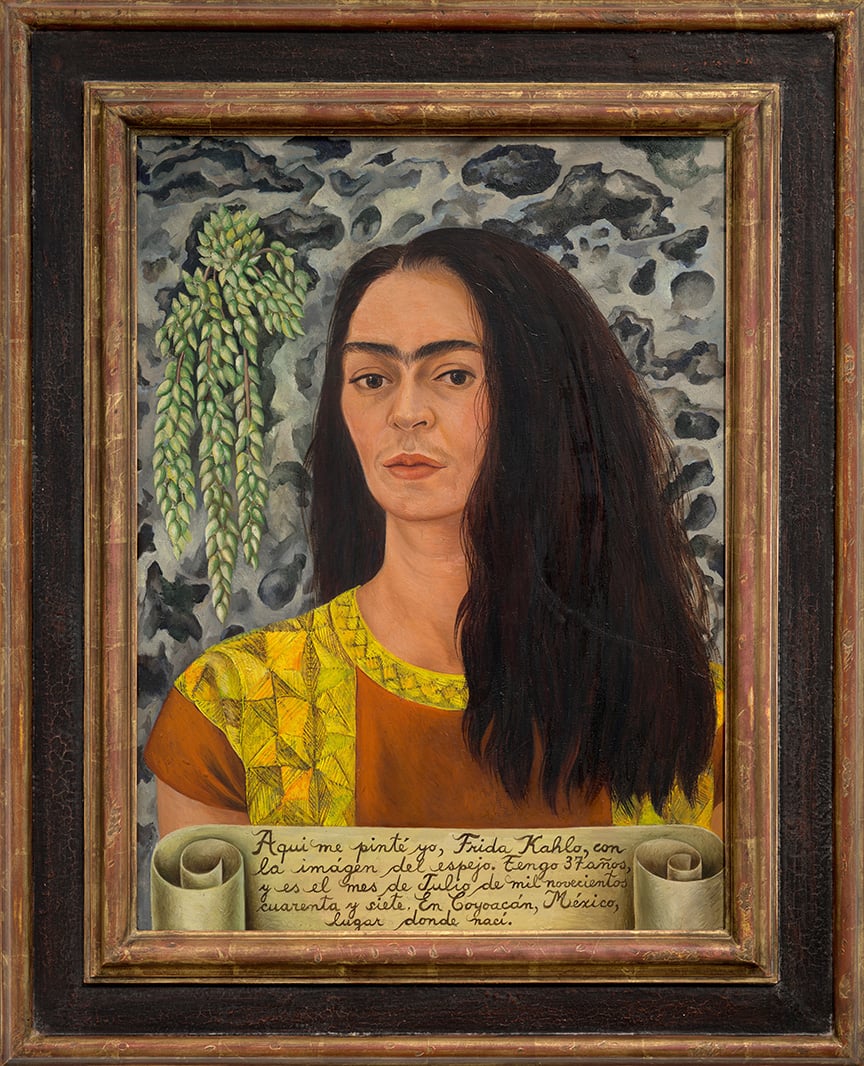
Frida Kahlo, Self-Portrait with Loose Hair (1947). © 2024 Banco de México Diego Rivera Frida Kahlo Museums Trust, Mexico, D.F. / Artists Rights Society (ARS), New York;
The poetry and tragedy of Frida Kahlo’s life—from her illnesses to her tempestuous marriage to Diego Rivera—can at times overshadow formal considerations of her visionary oeuvre. This anticipated exhibition “Frida: Beyond the Myth” brings together approximately 60 works, including paintings, drawings, prints, and photographs, and delves into the ways Frida’s lived experiences shaped the symbols and strategies she employed in her own works. The exhibition also includes a number of photographs of Kahlo as captured by friends, photographers, and artists who were intimates of Kahlo’s; these photographs offer an unguarded, glimpse into her world.
–Katie White
“Magdalena Suarez Frimkess: The Finest Disregard” at the Los Angeles County Museum of Art, Los Angeles, California
August 18, 2024, to January 5, 2025
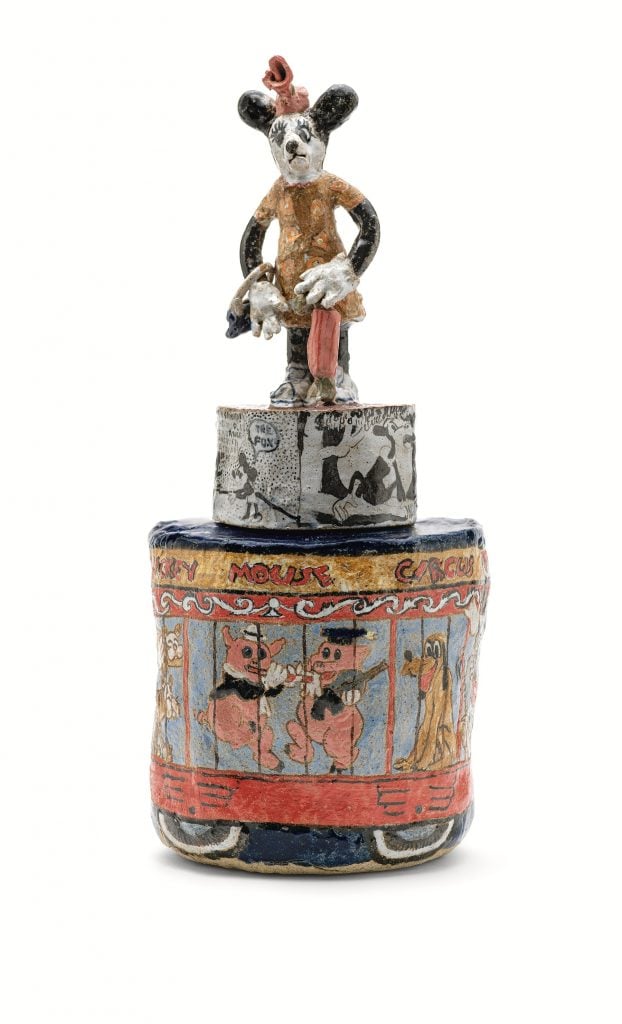
Magdalena Suarez Frimkess, Mickey Mouse Circus Jar with Minnie Mouse Finial (2008), collection of Karin Gulbran, © Magdalena Suarez Frimkess, photo © Museum Associates/LACMA.
The California-based sculptor was born in Caracas, Venezuela, in 1929. Her first solo show was just in 2013, when she was 84; before that she worked in productive collaboration with her husband, ceramicist Michael Frimkess (the two were shown together in “Made in L.A.” biennial, back in 2014).
And yet her works have a carefree quality to them: wonky little figures and funny drawings that will make you smile at how unassumingly committed to being their own quirky selves they seem. The subject matter of her Pop-y clay figures and vessels can feel familiar: vintage cartoon icons, presumably those from Suarez Frimkess’s youth—Minnie Mouse, El Condorito, Felix the Cat. But the best render these familiar icons in a way that is not ironic but so peculiar that they feel like familiar images having been turned over in memory so many times that they have become a whole new character, with a new personality.
—Ben Davis
“Jeremy Frey: Woven” at Portland Art Museum, Maine
Through September 15, 2024
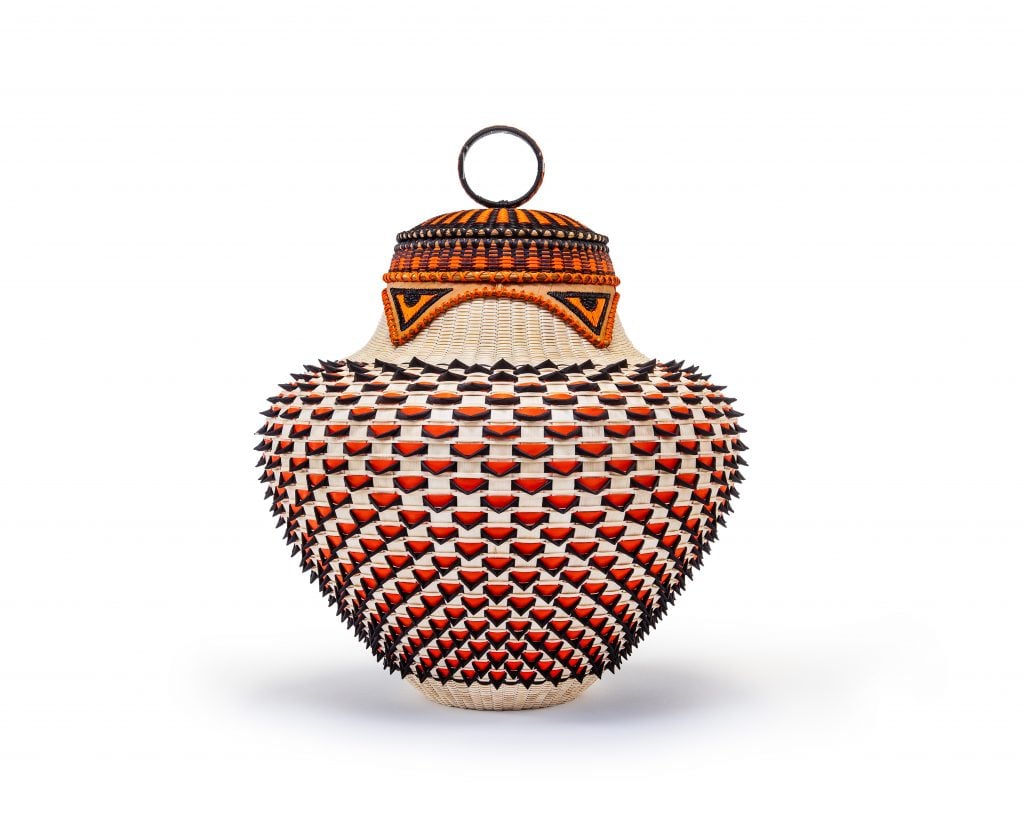
A woven basket by Indigenous Maine-based artist Jeremy Frey. Courtesy: Portland Museum of Art
The first-ever major retrospective of a Wabanaki artist in a fine art museum in the United States, Jeremy Frey: Woven brings together current focus on fiber art and Indigenous artists (in Venice, Jefferey Gibson represents the U.S. and native Australian artist Archie Moore won La Biennale’s top prize, Golden Lion). The show features more than 50 baskets, made from natural materials like black ash, porcupine quills, and sweetgrass. Intricate and expressive, these works feature abstract patterns and representations of birds and animals. Frey’s practice is rooted in ancient tradition, with techniques passed from one generation to the next. A seventh-generation Passamaquoddy basket maker, Frey learned the techniques from his mother. The works on view range from traditional baskets to monumental vases, featuring meticulous porcupine quillwork.
—Katya Kazakina
“Mary Ellen Bute: Rhythms In Light” at the George Eastman Museum in Rochester, New York
Through September 1, 2024
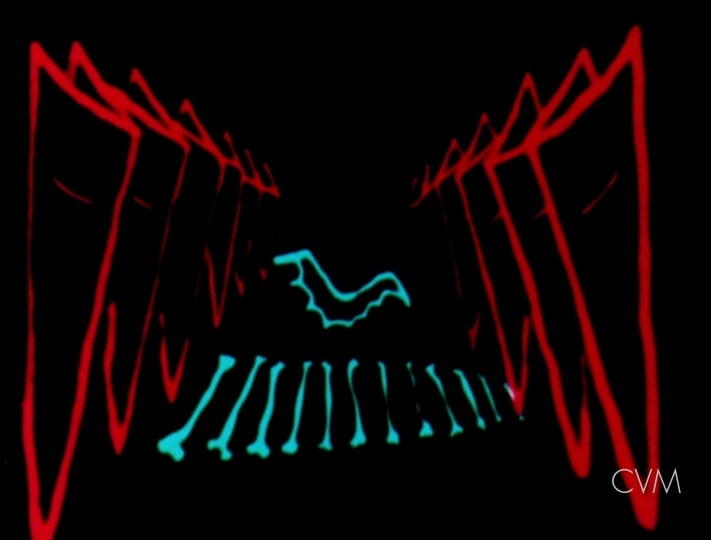
Mary Ellen Bute. Still from Spook Sport (1939). Photo courtesy of Center for Visual Music via the Eastman Museum
Mary Ellen Bute, born in the Texas city of Houston in 1906, was a trailblazing artist experimenting with abstract film and animation. She’s best remembered for her “visual music,” which are pieces of abstract visuals synchronized with music, like elegant precursors to the Windows Media Player Visualizations popular in the 2000s. Bute was particularly inspired by the paintings of Wassily Kandinsky and was a creative partner of Leon Theremin, the inventor of one of the first electronic musical instruments. She is considered one of the first female experimental filmmakers and her works were shown at select movie theaters and other venues, including Radio City Music Hall, beginning in the 1940s.
—Adam Schrader
“Tyler Mitchell: Idyllic Space” at the High Museum of Art, Atlanta
Through December 5, 2024
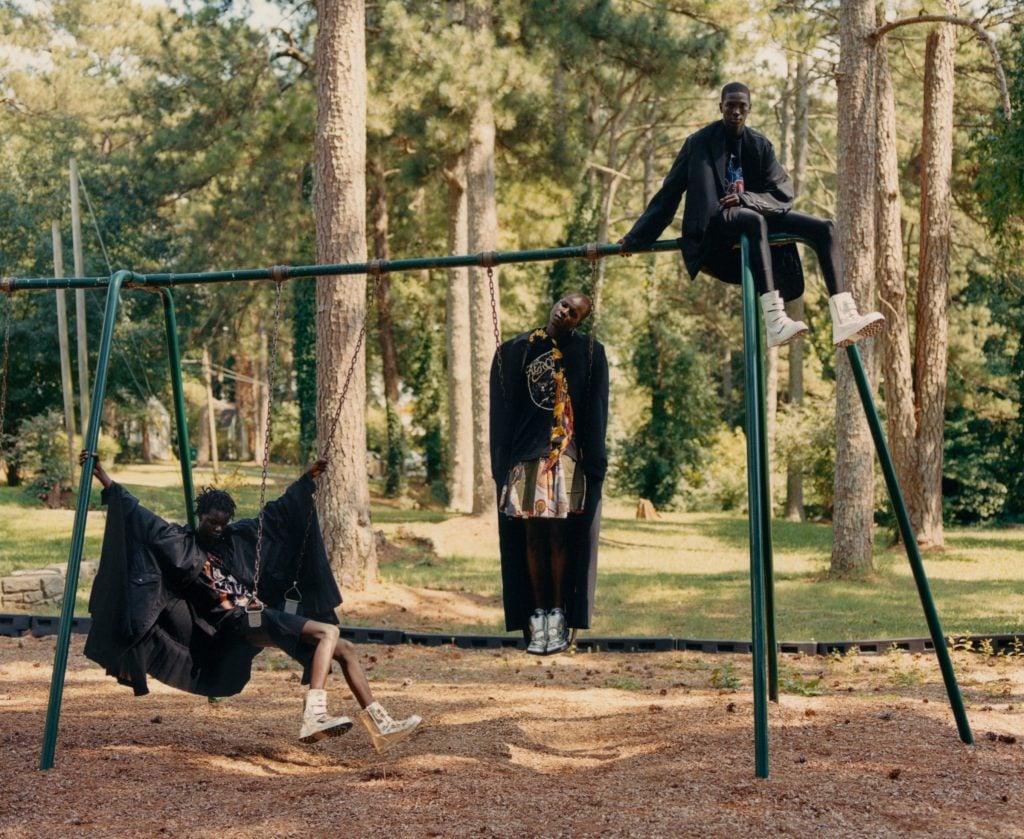
Tyler Mitchell, Untitled (Brothers of Suburbia), 2021, archival pigment print, courtesy of the artist. © Tyler Mitchell.
Tyler Mitchell has built a career on imagining what a Black Utopia could look like through his dreamlike, fashion-informed photography. In his hometown of Atlanta, the High Museum is hosting his first-ever museum solo show, featuring several images that were inspired by and shot in the city.
Mitchell’s photographic style is vibrantly colorful and eye-catching on ethereal backdrops and landscapes, and often incorporates clothing from some of the world’s leading fashion brands. The show also incorporates a new photo-sculptural work by the artist, which blends his imagery with textiles, to fully immerse viewers into Mitchell’s imagined world.
—Annie Armstrong